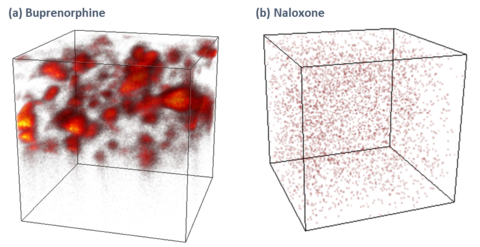Summary
Time-of-flight secondary ion mass spectrometry (ToF-SIMS) employs a pulsed primary ion beam and a time-of-flight mass analyzer for the detection of molecular ions with mass-to-charge ratios ranging from m/z 1 to m/z 10,000 in a single spectrum. Combined with this molecular specificity, the technique can provide chemical images with a lateral resolution below 500 nm, allowing for the spatially resolved visualization of structures and trace chemical residues within very complex samples.
Description
ToF-SIMS is an imaging mass spectrometry (MS) technique that allows us to obtain isotopic, elemental, and molecular information from the surface of solid samples. A pulsed, energetic “primary” ion beam bombards the surface and induces a collision cascade, liberating “secondary” ions that are then sent to a time-of-flight mass analyzer for detection (Figure A). The ion dose needs to be kept low (< 1% of the number of molecules on the surface) to minimize chemical damage (such as molecular fragmentation) to the sample, making the technique particularly suited for the discrimination of organic molecules.
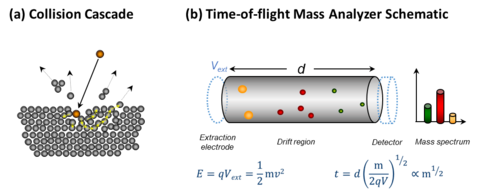
The instrument supports a wide variety of critical programs at NIST, such as in forensics for the age dating of fingerprints (Figure B), or to support the optimization and development of next generation instruments such as trace explosive detectors (Figure C) where the threshold temperature can be determined for optimum explosive particle desorption, and ambient mass spectrometry instruments (Figure D) where the visualization of the sputtered flux can be used for optimizing ion transmission.
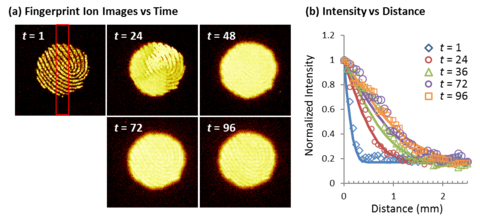
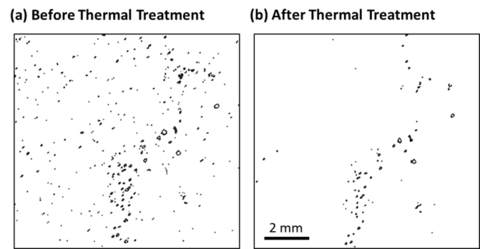

Cluster Ion Sources for Molecular Depth Profiling
In addition to a bismuth source for analysis, ToF-SIMS can be equipped with a cluster source such as Ar2800 for sample sputtering. By operating these sources in tandem, a molecular depth profile can be obtained that reveals the concentration of chemistry as a function of depth, or the visualization of chemical structures in a 3D image. No other technique can produce 3D chemical maps that combine molecular information with nanometer depth resolution, making ToF-SIMS an incredibly powerful technique for the characterization of complex structured samples.
For example, the individual layers in an automotive paint film can be characterized both from its cross section as well as from the surface (depth profile). Knowing the chemical makeup of certain layers in the paint can be beneficial for identifying the make and model of the car that may have been involved in an accident or a crime (Figure E).
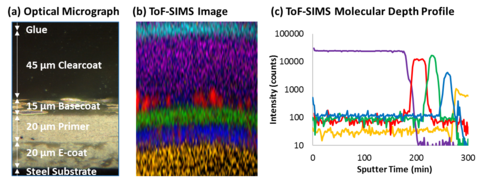
Another example uses the technique to visualize active pharmaceutical ingredients inside drug delivery films to determine key characteristics that define the potency and the kinetics of the medication, such as their spatial distribution, size distribution, and location inside the film. The strength of ToF-SIMS lies in its capability to detect and identify multiple chemical species inside a 3D space without the need for a marker. In this example, the technique is able to reveal the design of the film, which places a higher concentration of buprenorphine (opioid agonist-antagonist) directly on the mucous membrane for fast action, while the naloxone (opioid antagonist) is uniformly distributed in the film for a slower and long-term release.
